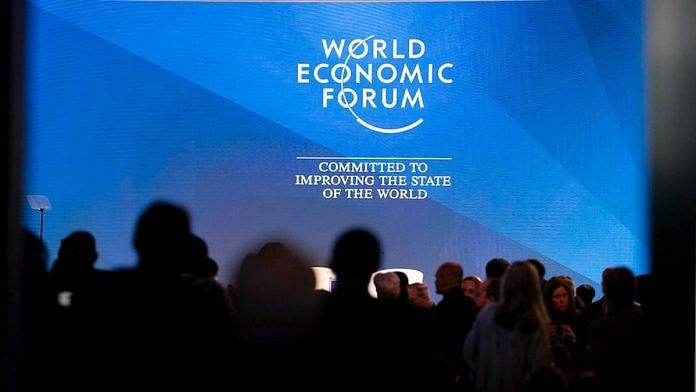New Delhi: Fracture of interstate relations, debt crises, widespread youth disillusionment, failure of technology governance and digital inequality are the top five risks that pose a threat to India, the World Economic Forum (WEF) — an international organisation for public-private cooperation headquartered in Geneva — has said its Global Risks Report for 2022.
The report is based on the WEF’s latest Executive Opinion Survey on ‘National Risk Perceptions’.
The survey, part of the 17th edition of the Global Risks Report, which was published on 11 January, has identified top five risks for each of 124 countries surveyed between May and September 2021.
This year, the report draws on the views of over 12,000 country-level leaders from 124 countries, who were asked to identify five out of a list of 35 critical short-term risks to their nations.
It defines the fracture of interstate relations as “economic, political and/or technological rivalries between geopolitical powers, resulting in a fracture of bilateral relations and/or growing tensions”. It goes on to highlight “air gaps” between central and local governments, adding that there is scope for both to “do more”.
The areas highlighted in these responses are likely to inform national decision-making and provide a perspective on how short-term risk national priorities may compare with global risks and perspectives, the report states.
Also Read: From pandemic to endemic? How Modi, Xi and Fauci are seeing Covid-19 in 2022
‘Air gaps’ between central & local governments
Though the survey does not delve into details while identifying the top five risks for each of the 124 countries — six of which are in South Asia — it does give an overall view of the different risks.
It says that both the Covid-19 pandemic and extreme weather events have highlighted areas where central governments and local bodies can combine more effectively. “Failure to join up policy agendas across national government departments can have devastating impacts at the local level, where crises play out and disconnects are exposed,” it notes.
The report goes on to state that “air gaps” between central and local governments — often due to struggles for authority or weaknesses in liaison networks — have compromised data flows, the effectiveness of initiatives and local trust.
According to the report, there is scope for central and local governments to do more to support resilience efforts at the community level, often in partnership with non-governmental organisations and businesses.
“Local resilience forums can galvanise communities to provide detailed intelligence on situational vulnerabilities and likely impacts of key risks, helping to prioritise resilience measures. Enhancing awareness and participation, empowering local actors and building capabilities are vital for the cultural shift that is essential for sustaining resilience programmes over the long term,” it adds.
“Debt crises” was also identified as an imminent threat to the world for the next two years, but the survey respondents believe they will reach their most critical point in three to five years.
“Government stimulus was vital to protect incomes, preserve jobs and keep businesses afloat, but debt burdens are now high and public budgets will continue to be stretched after the pandemic, even as they are needed for financing just and green transitions,” the report notes.
(Edited by Gitanjali Das)
Also Read: Modi can’t speak? Tech glitch during WEF speech triggers bogey of ‘teleprompter PM’






